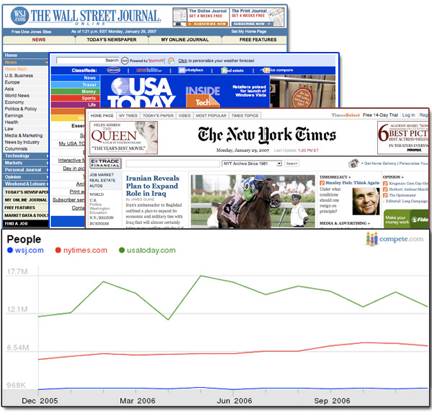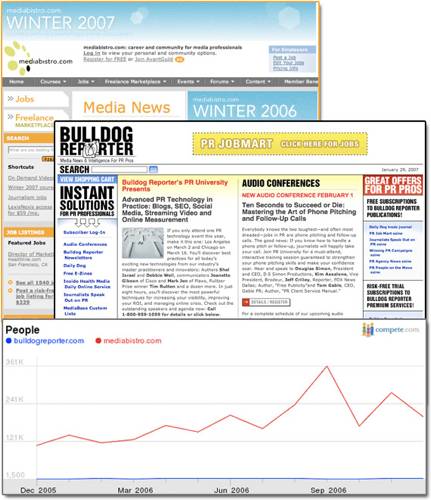Hybrid Websites come in many variations as they successfully and often unsuccessfully merge functionality from two or more of the other website archetypes and sub archetypes into a single (often confusing) user interface.
Magazine and newspaper companies often build Hub, Retail Subscription and Membership functionality into a single user interface. The lack of a dedicated, open architecture, content rich, search engine optimized Internet Hub sometimes limits their overall website traffic and revenue generation capability.
In this chapter, we profile both B2B Hybrid Websites and B2C Hybrid websites.

Hybrid Websites come in many variations as they successfully and often unsuccessfully merge functionality from two or more of the other website archetypes and sub archetypes into a single (often confusing) user interface.
B2C Hybrid Websites
Magazine and newspaper companies often build Hub, Retail Subscription and Membership functionality into a single user interface. Successful examples include The Wall Street Journal, Cook’s Illustrated and Wine Spectator Online. The lack of a dedicated, open architecture, content rich, search engine optimized Internet Hub limits their overall website traffic and revenue generation capability. The New York Times is profiled here.

As the website architecture becomes more open, website traffic climbs dramatically. The open architecture also either reduces or eliminates the opportunity to charge for premium content. WSJ.com keeps most of its content behind the firewall exposing only 893 pages to the Yahoo! Site Explorer; NYTimes.com takes a balanced approach exposing 2.3 million pages to search; while USA Today exposes its entire 800,738 page archive and sells no premium content online. Mequoda estimates that premium content for WSJ.com exceeds $50 million annually while the new New York Times Select strategy ended 2006 at a $10 million run rate and is climbing rapidly.
[text_ad]
B2B Hybrid Websites
B2B publishers often build Hub/Retail Catalog Hybrids that make it difficult for users to find popular products that are buried by the publishers’ full list of SKUs (Store Keeper Units). Successful examples include FDA News, Bull Dog Reporter and BLR.com. Many of these sites do suffer from lower conversion rates based on their use of one-size-fits-all shopping cart checkout architecture.

MediaBistro.com offers users 118,588 pages of free content using Mequoda Website Network navigation and information architecture resulting in 40X more traffic for December 2006 compared to Bull Dog Reporter, which uses a classic B2B Retail Catalog Website for subscription, solo and membership products.
This article was written by Don Nicholas with the help of Peter A. Schaible. It is only one part of a series on Internet Business Models. See below for the rest of this series:


